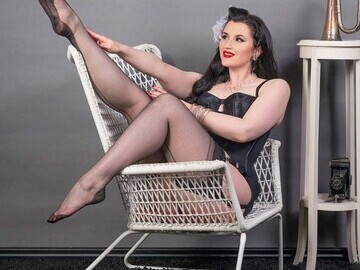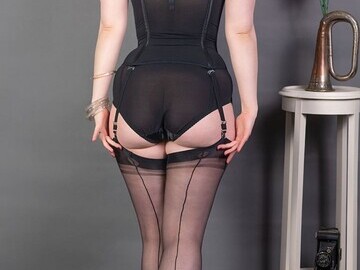Why Did Stockings Used to Have Seams? Fully Fashioned Stockings
The short answer is that all stockings used to be knitted flat and the seam was added to hold the stocking together.
Seamed stockings are the perfect finishing touch to a 1950s style outfit, after all, nobody would be seen without a seamed nylon clad leg during that decade.
Why did Stockings used to have Seams?
The short answer is that all stockings used to be knitted flat and the seam was added to hold the stocking together. The technology to make a tubular stocking simply wasn’t available.
The machines used to make these seamed stockings were huge and cumbersome, weighing 30 tons, with a top speed of 30 pairs per hour. The stockings were known as ‘Fully Fashioned Stockings’ as they were fashioned to fit the leg. The stockings they made were beautiful, but manufacturers wanted a cheaper and easier way to knit them.
In the 1950s circular knitting machines were developed and by the mid 1960s seam free stockings had taken over in popularity from seamed Fully Fashioned Stockings. Over the years the Reading machines that were used to make Fully Fashioned Stockings were slowly retired with the last mainstream hosiery brand, Aristoc, discontinuing their Harmony Point Stockings in the early 1990s.
This could have signaled the end of Fully Fashioned Stockings, but 1950s style remained fashionable with faux seamed stockings being developed by many hosiery and lingerie brands including What Katie Did. Today they’re still worn regularly by an ever growing retro fashion fan base as well as visitors to vintage events like the Goodwood Revival. The continued appeal of seamed stockings has been enough to keep genuine Fully Fashioned Stockings in production, although the sales of modern imitation seamed stockings by far outweigh the originals.
Just a handful of factories are still knitting genuine Fully Fashioned Stockings and at What Katie Did we’re proud to support the manufacture of these artisan nylons, having sold them since 1999. Our Fully Fashioned Stockings are made on traditional Reading machines in the north of England and are made from sheer 15 denier nylon. The seam is finished by hand on an overlocker and each leg is individually checked and paired.
Our Fully Fashioned Stockings have appeared on the silver screen, worn by actors including Oprah Winfrey (in The Butler) and Meryl Streep (in Florence Foster Jenkins). Alas, supply frequently outstrips supply which means that most media productions choose our 1950s inspired Glamour Seamed Stockings unless the shot is a close up.
When it comes to stocking aficionados the stocking of choice for that 1950s finishing look remains the Fully Fashioned Stocking.
How can you tell a genuine Fully Fashioned Stocking from a modern reproduction?
- Picot lines: tiny lines of dots either side of the seam on the calf and thigh. Picot lines are made by the Reading knitting machine as it increases or decreases stitches to widen 'fashion' the leg.
- Finishing loop: there is a hole in one side of the welt (stocking top) made when the welt is folded over and finished. It's part of the manufacturing process and not, as urban myth suggests, made to allow you to hold up your stocking by inserting an old penny and twisting!
Find out more:
What Katie Did UK/Outside USA: https://www.whatkatiedid.com/collections/fully-fashioned-stockings
What Katie Did USA: https://us.whatkatiedid.com/collections/fully-fashioned-stockings
Press release distributed by Pressat on behalf of What Katie Did, on Wednesday 30 June, 2021. For more information subscribe and follow https://pressat.co.uk/
Fully Fashioned Stockings Seamed Stockings 1950s Fashion Goodwood Revival Fashion Vintage Fashion Stockings Vintage Fashion Vintage Lingerie Retail & Fashion
Published By

0345 430 8743
media@whatkatiedid.com
https://www.whatkatiedid.com
Press contact:
Jenny Willoughby media@whatkatiedid.com 0345 430 8743
Visit Newsroom
You just read:
Why Did Stockings Used to Have Seams? Fully Fashioned Stockings
News from this source:



